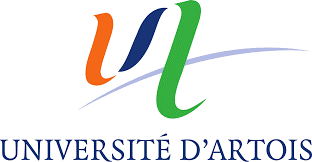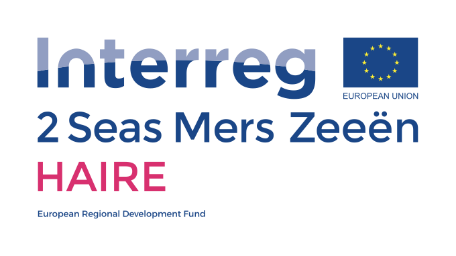In early November, SIG‘s HAIRE team were delighted to welcome our Belgian partners Sofie Schepers and Katrien Serroyen who were visiting Cornwall from Laakdal. After a weekend of cultural and historical activities – taking in Guy Fawkes’ night and a tour of Falmouth’s Tudor castle, Pendennis – they spent a day exchanging experiences with Feock (one of our pilot sites) before travelling to East Sussex pilot sites and meeting our partners at Rother Voluntary Action and East Sussex County Council.
The East Sussex team were keen to give as broad a picture as possible of their locality and took our Belgian colleagues on a tour that took in the quaint beauty of Rye (cobbled streets and the fifteenth century Mermaid Inn), Tilling Green social housing estate, new housing in Winchelsea, and a relatively new community hub – The Hub on the Hill – which runs many classes and services for the community with an emphasis on older residents.
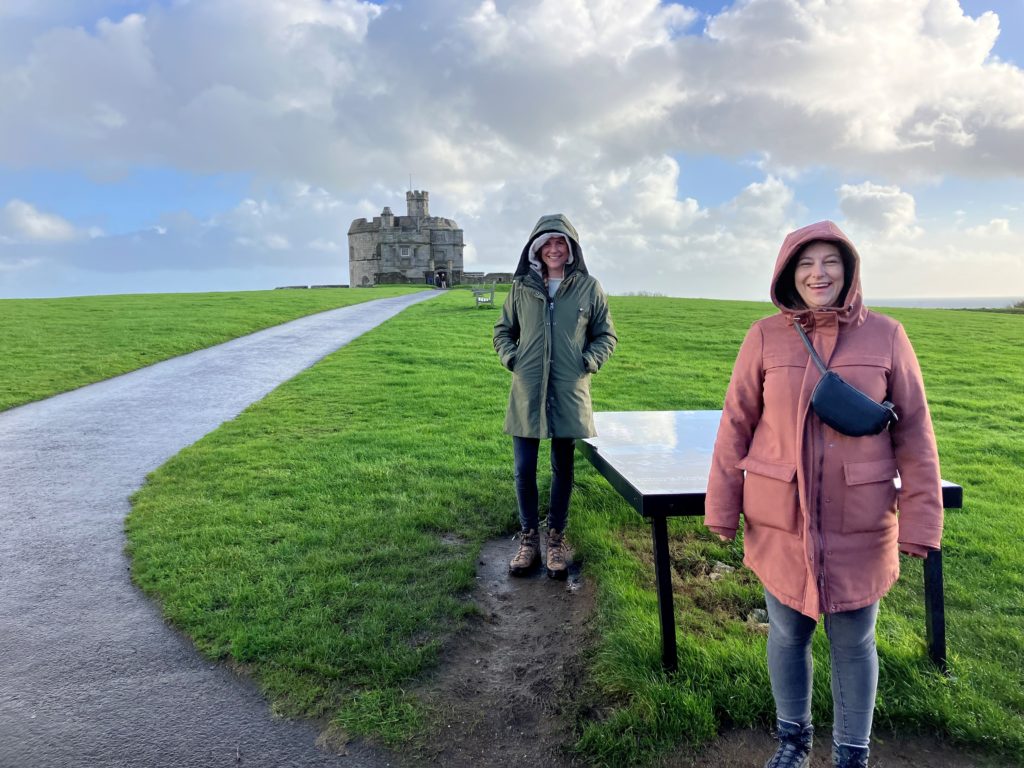
Katrien and Sofie at Pendennis Castle, Falmouth, Cornwall
The cultural exhange and sharing is important for Interreg2Seas funded projects. They promote cooperation between regions and countries to enhance economic and social development in our own countries and across borders. Our HAIRE 2Seas partners share the common challenge of supporting people to age well in rural areas, where loneliness and isolation and mobility problems are just some of the themes being tackled. Having had very few opportunities to meet due to restrictions brought about by the Covid pandemic, it was inspiring to share experiences and perspectives from nearly three years of HAIRE action and learning in our respective locations.
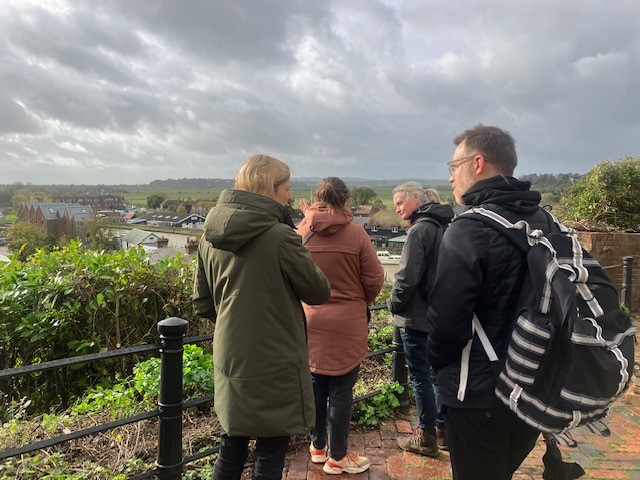
Steve, Sue and Naomi from East Sussex taking the Belgians on a tour of their locality
At the initial meeting in Devoran, the village in Feock parish where the council offices are located, the difference between locations felt quite stark to our Belgian colleagues: Laakdal is a municipality with a population of around 16,000, whereas the population in Feock Parish numbers around 3,700. The larger East Sussex pilot sites felt more familar to the Belgian team. Yet one of the most difficult challenges for all locations has been reaching members of the community who may be in need, or may benefit from HAIRE’s activities, but who are almost “hidden.”
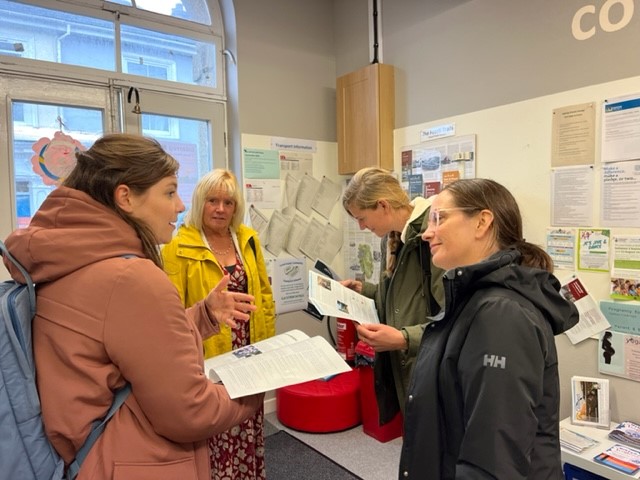
The extended HAIRE team pictured in a community space at Feock parish council
However, as a result of the emphasis the HAIRE toolkit placed on listening to residents, the needs of the older population as a whole can be better taken into account. Now that HAIRE and its ethos of co-creation and listening is familiar to each department and area of responsibility, the views, opinions, needs and ideas of residents are being heard, and this has led to subtle changes in the system. Different methods to listen and co-create products and services have been introduced in all of our pilot sites to ensure their older residents are included in important decisions.
Feock now has an information and help line, originating out of the Covid pandemic, but which has become a staple of the parish. A legacy of HAIRE is that parish-based decisions take into account any impact on the older population in a way that they may not have been so obviously before. It is the same in Laakdal: the planning department, for example, is aware of the way its decisions impact the elderly – and they are now prepared to consult the HAIRE team for information about how they might best move forward with their works.
East Sussex partners have done an excellent job by instigating local and national design innovations after working with the RSA, the royal society for arts, manufactures and commerce (“committed to a world that is resilient, rebalanced and regenerative, where everyone can fulfil their potential.”) Their Hastings and Rother Ageing Network meets monthly to network with local organisations, groups and individuals with a focus on how they can work together to make Rother and Hastings healthy and supportive places to grow older in.
From a longer term, strategic standpoint, Feock has made the decision to work with partners to develop a formal age-friendly community as our partners in East Sussex have done. The Guided Conversations in pilot sites illustrated the multiple dimensions of ageing well, which prompted the need for a holistic system response, and the UK arm of the World Health Organisation’s Age Friendly Communities programme is well aligned with the aims of the HAIRE project.
As Katrien and Sofie pointed out, the pilot site comparisons were useful, showing commonalities and differences and making them reflect on what went well in their own communities – and how “HAIRE thinking” could be built into longer term planning.
“Feock felt very isolated in comparison to Laakdal. The lack of public transport, the lack of shops, the very rural environment, the huge amount of second homes … I would think that building the community would be very difficult. Yet they succeed to organise meetings where 80 people attend and they make the most of small things (the red phone booths made into small libraries). Well done Feock! Rye felt more like Laakdal. What stood out was that both pilot sites are much more in contact with the church. In Belgium the church doesn’t organise much and in our pilot site the church isn’t involved. What was also different is the health part. I think that in the UK the health partners and health “input” is bigger than in Belgium. In Laakdal it’s more community building and well being than health. What I think both pilot sites did very well is thinking about life after HAIRE right from the beginning of the project. I believe that that will make it possible to continue and embed HAIRE better.”
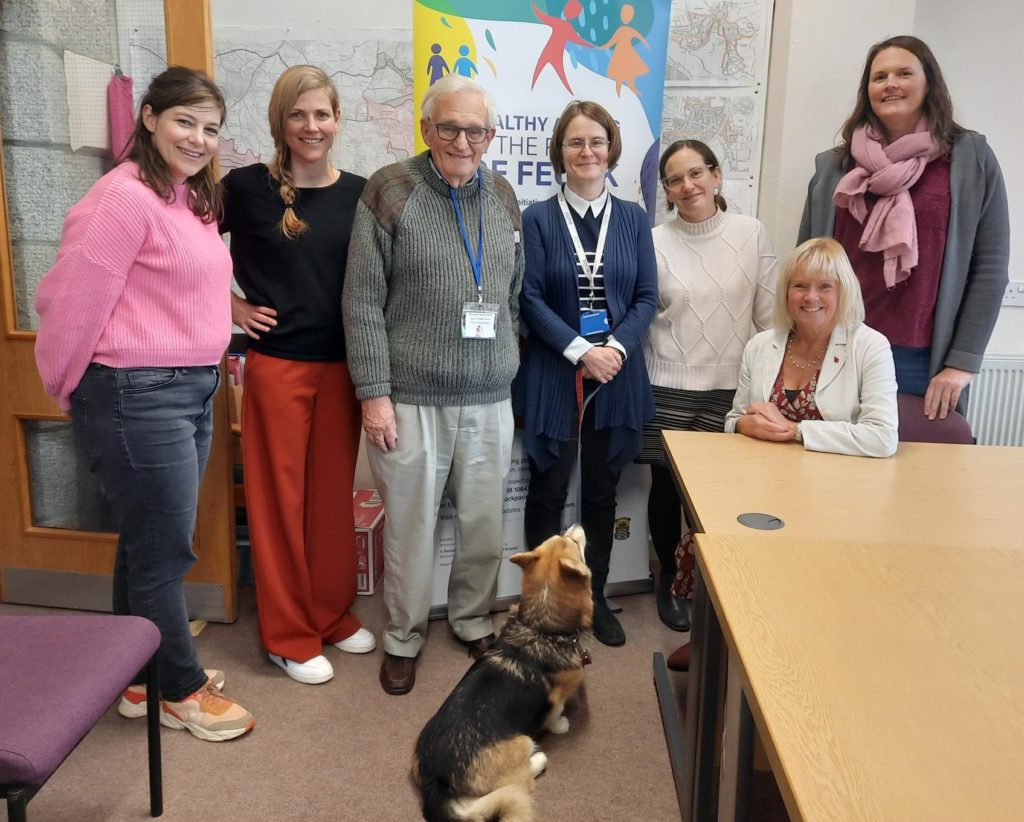
The Belgian team with Feock and the University of Exeter – and the HAIRE mascot, Treacle
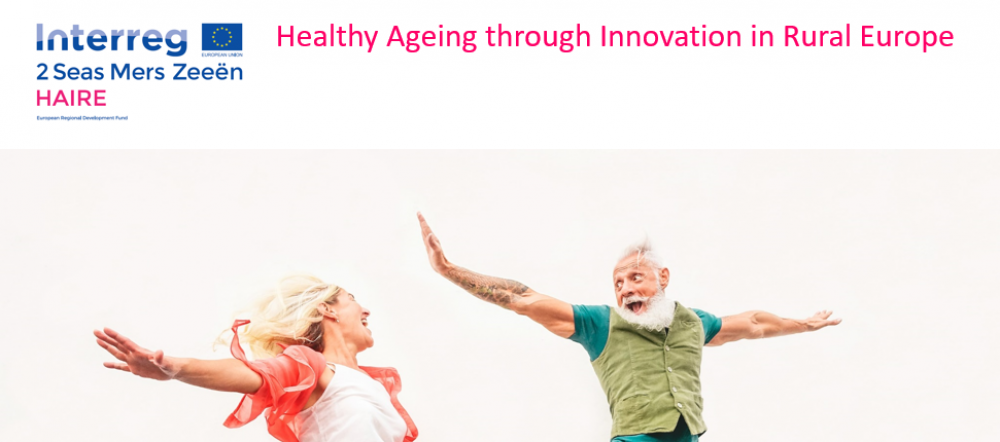
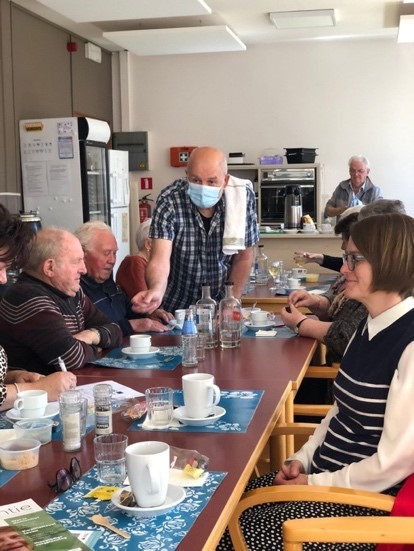
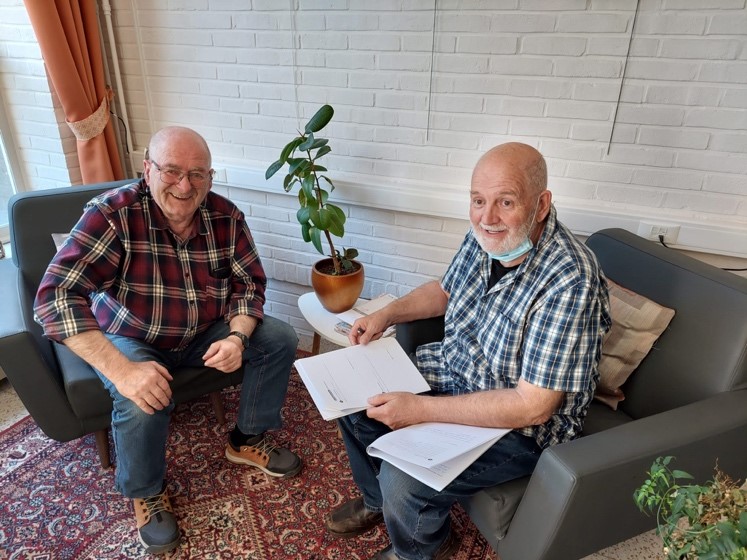
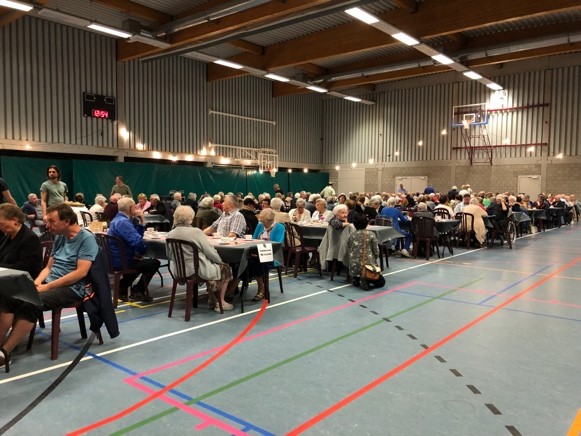 About 250 people attend this lunch, seated at long tables set out in a sports hall decorated with fairy lights around the walls. There is a stage, lighting and an impressive sound system. Alderman Gerda Broeckx makes a speech about HAIRE. The entertainment is provided by Juul Kabas who sings popular sing-along classics and gets everyone clapping. Freddie is also volunteering at this event and tells me that Juul was badly affected during lock down, unable to do shows. Juul signs off his set with the phrase “If you lose your smile, you lose your heart”. The Seniors’ Party was a model of community action, with everyone working hard to create a joyous atmosphere.
About 250 people attend this lunch, seated at long tables set out in a sports hall decorated with fairy lights around the walls. There is a stage, lighting and an impressive sound system. Alderman Gerda Broeckx makes a speech about HAIRE. The entertainment is provided by Juul Kabas who sings popular sing-along classics and gets everyone clapping. Freddie is also volunteering at this event and tells me that Juul was badly affected during lock down, unable to do shows. Juul signs off his set with the phrase “If you lose your smile, you lose your heart”. The Seniors’ Party was a model of community action, with everyone working hard to create a joyous atmosphere.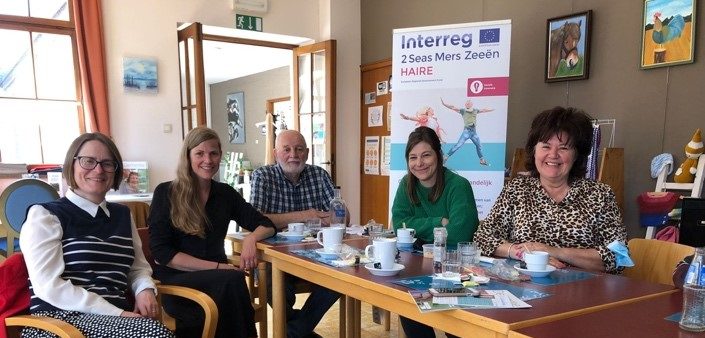
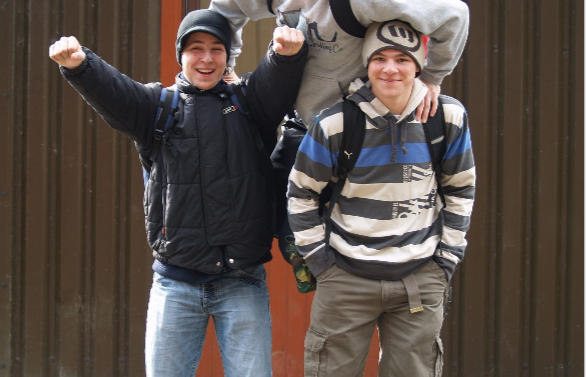
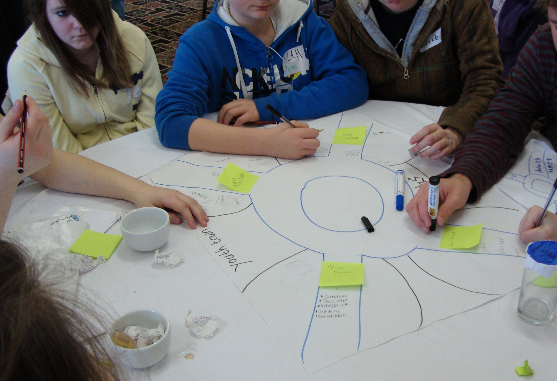
 Season’s Greetings! After nearly two years of working together throughout the Covid pandemic, the team has still not managed to meet up in person since the project launch in early 2020. At the end of 2021, plans for our first face to face gathering were once again thwarted by the emergence of Omicron, but we are still finding ways to connect with each other on a personal level despite everything. To celebrate the season, the HAIRE team got together virtually to share their favourite family recipes from each of our four countries: the UK, France, Belgium and the Netherlands. Such was the response we decided to make our own HAIRE recipe book, featuring tasty dips and snacks, desserts and treats from across the 2Seas region. Below are a few highlights …bon appetit!
Season’s Greetings! After nearly two years of working together throughout the Covid pandemic, the team has still not managed to meet up in person since the project launch in early 2020. At the end of 2021, plans for our first face to face gathering were once again thwarted by the emergence of Omicron, but we are still finding ways to connect with each other on a personal level despite everything. To celebrate the season, the HAIRE team got together virtually to share their favourite family recipes from each of our four countries: the UK, France, Belgium and the Netherlands. Such was the response we decided to make our own HAIRE recipe book, featuring tasty dips and snacks, desserts and treats from across the 2Seas region. Below are a few highlights …bon appetit!

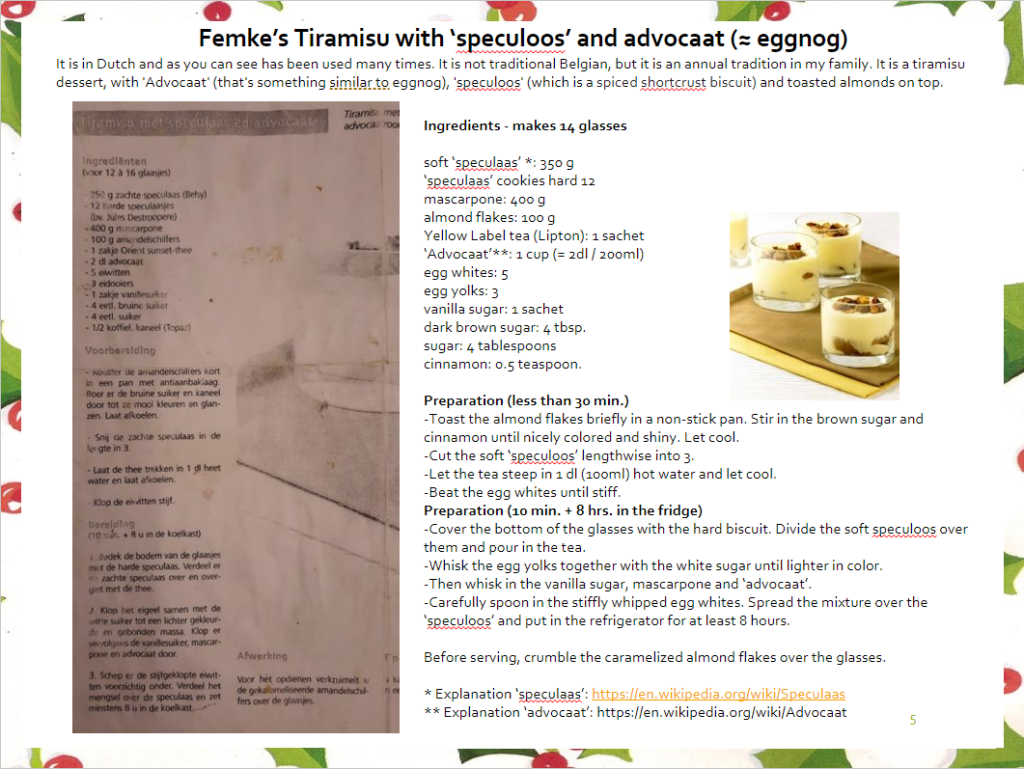





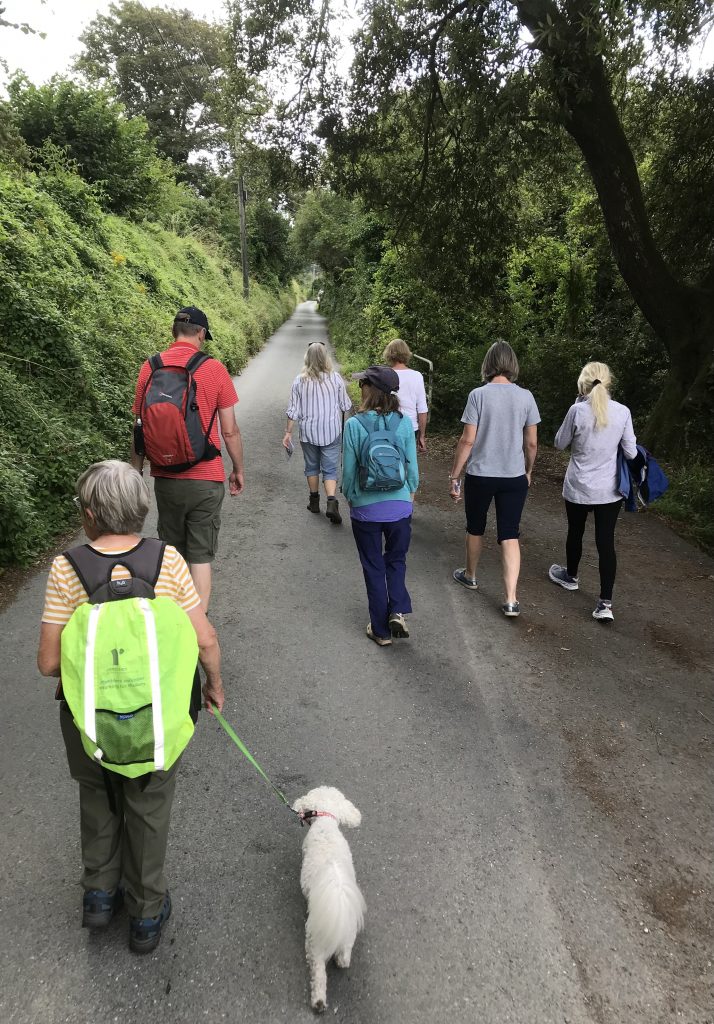
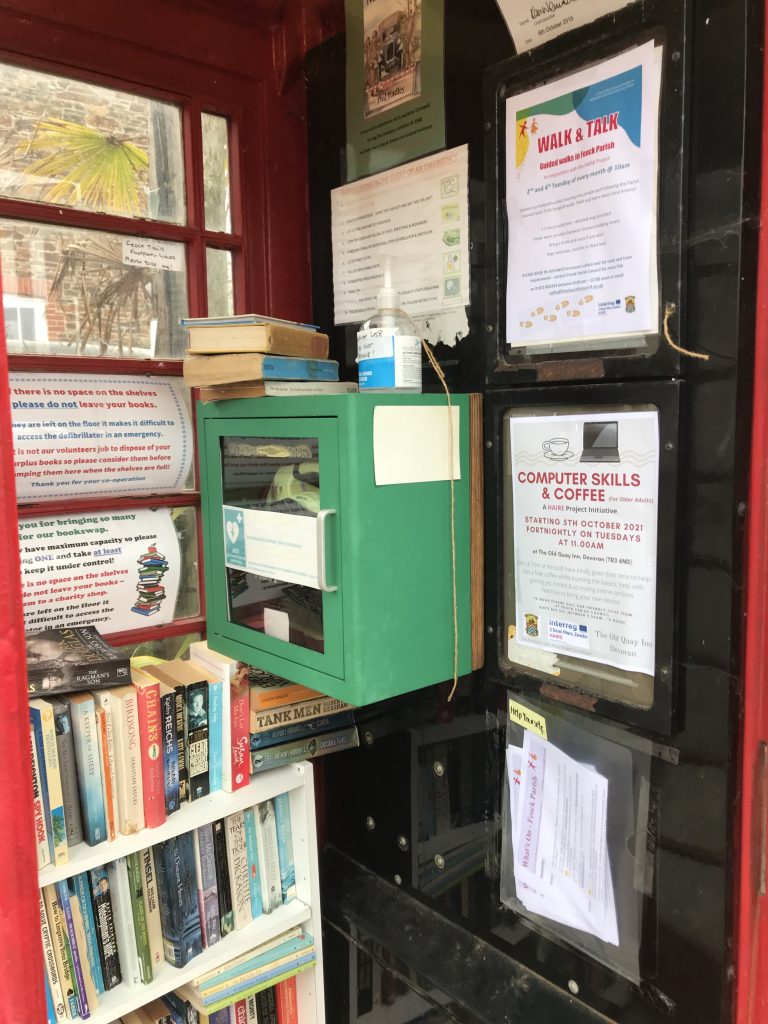
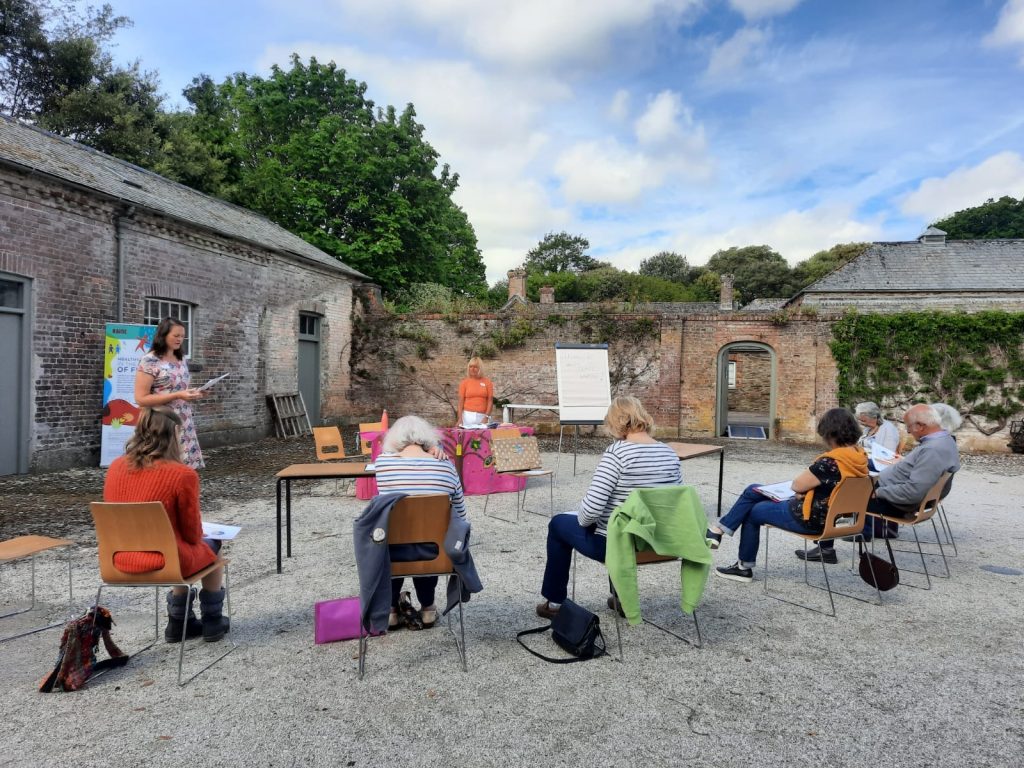
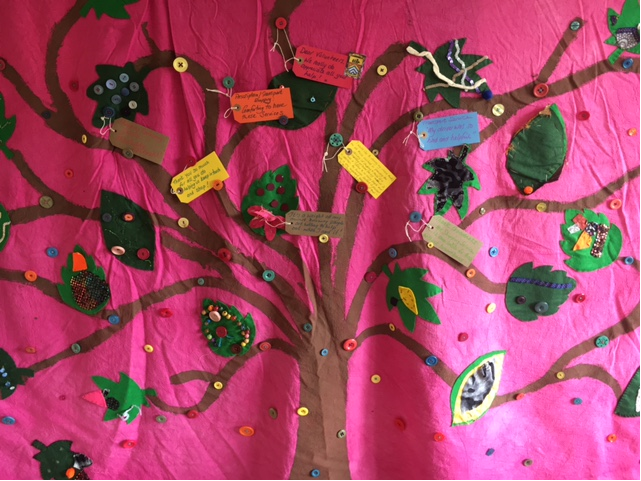
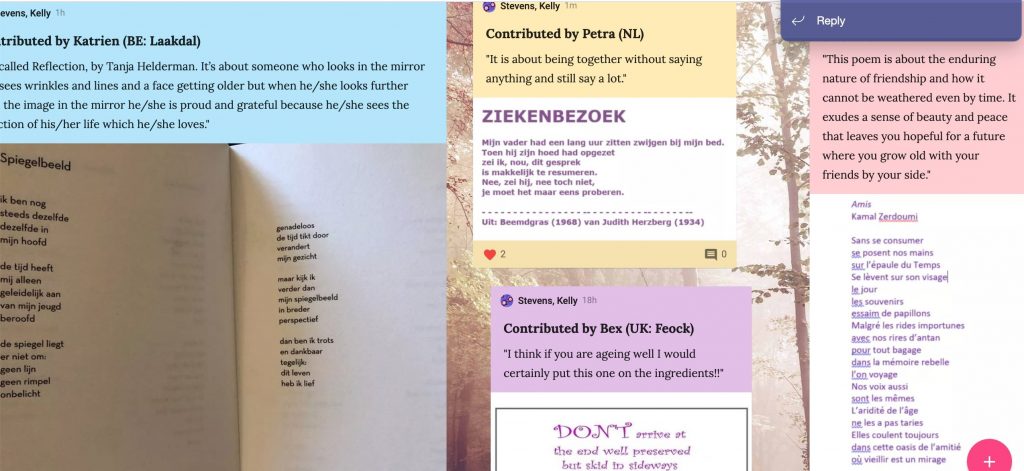

 (This blog is written in English and French – please scroll to the end for the French language version.)
(This blog is written in English and French – please scroll to the end for the French language version.)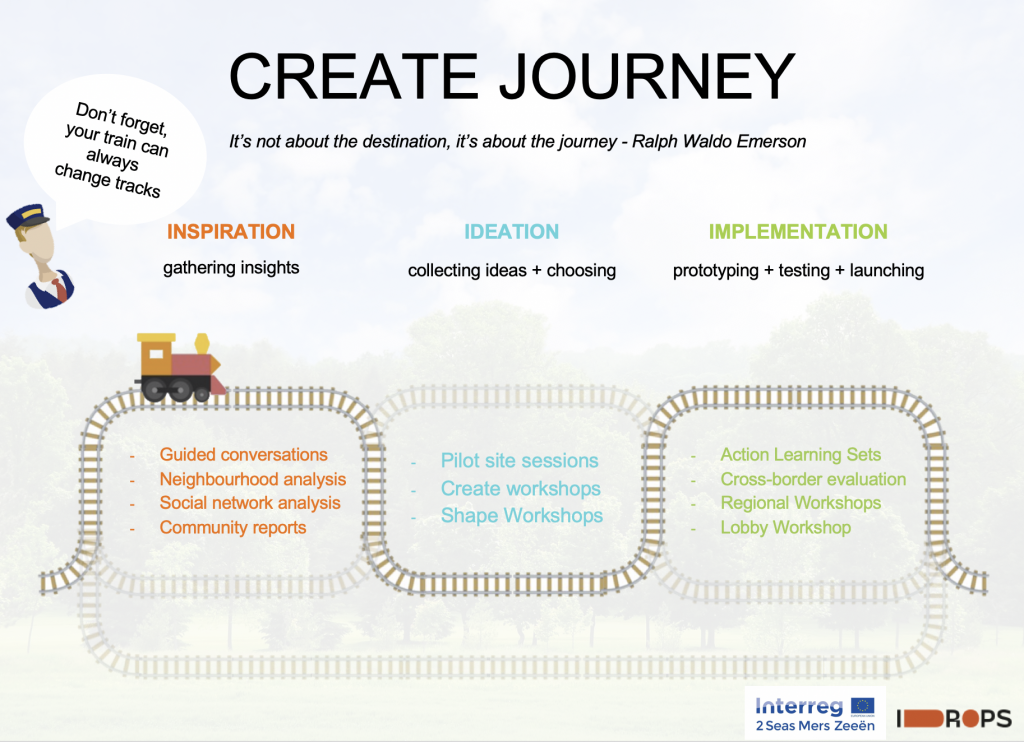

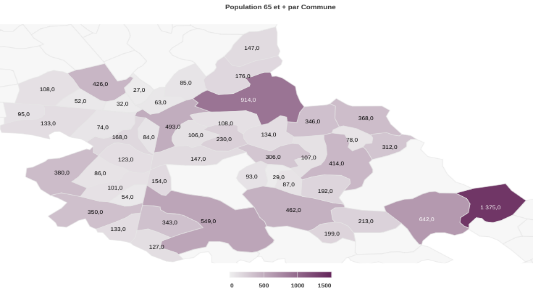 Elle vise à assurer une prise en charge de qualité des publics vulnérables. L’objectif de la formation est de former les professionnels de demain capables de répondre aux nouveaux besoins et aux nouvelles attentes des seniors. L’enjeu de la recherche est de permettre des innovations au service de la qualité de vie des seniors. Cependant, avant d’entreprendre toutes actions visant à favoriser leur maintien à domicile tout en luttant contre leur isolement en milieu rural, il était nécessaire de comprendre l’environnement dans lequel ces personnes évoluaient. Ce fut le challenge pour l’année 2021 pour les 22 étudiants issus du Master 1 « Management sectoriel ».
Elle vise à assurer une prise en charge de qualité des publics vulnérables. L’objectif de la formation est de former les professionnels de demain capables de répondre aux nouveaux besoins et aux nouvelles attentes des seniors. L’enjeu de la recherche est de permettre des innovations au service de la qualité de vie des seniors. Cependant, avant d’entreprendre toutes actions visant à favoriser leur maintien à domicile tout en luttant contre leur isolement en milieu rural, il était nécessaire de comprendre l’environnement dans lequel ces personnes évoluaient. Ce fut le challenge pour l’année 2021 pour les 22 étudiants issus du Master 1 « Management sectoriel ». 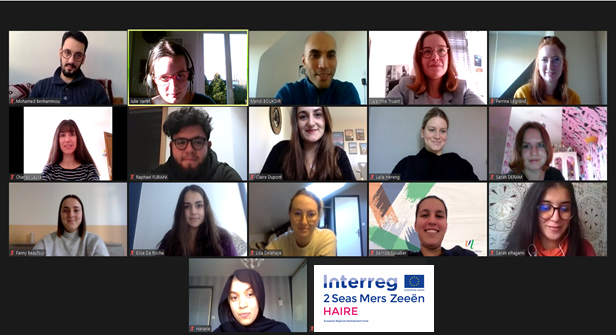 Ceux-ci ont travaillé en collaboration avec les partenaires des Flandres Intérieures afin de produire un diagnostic démographique, de l’accessibilité et des services du territoire par le biais de la boite à outils HAIRE. Tout l’enjeu de ce travail repose maintenant sur les actions à mettre en œuvre afin de lutter contre cet isolement rural en Flandre Intérieure.
Ceux-ci ont travaillé en collaboration avec les partenaires des Flandres Intérieures afin de produire un diagnostic démographique, de l’accessibilité et des services du territoire par le biais de la boite à outils HAIRE. Tout l’enjeu de ce travail repose maintenant sur les actions à mettre en œuvre afin de lutter contre cet isolement rural en Flandre Intérieure.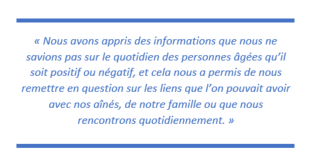
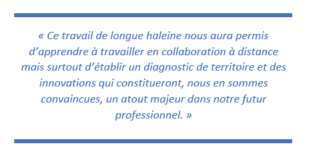 Ce pourquoi les étudiants du Master étudient actuellement une gamme d’innovation sociale, en rupture par rapport à l’existant ou se basant sur une solution existante pour significativement l’améliorer. Ces nouvelles solutions, intégrant les besoins repérés dans le discours des personnes âgées, seront proposées aux partenaires français lors des ateliers CREATE, voués à la conception d’innovations locales.
Ce pourquoi les étudiants du Master étudient actuellement une gamme d’innovation sociale, en rupture par rapport à l’existant ou se basant sur une solution existante pour significativement l’améliorer. Ces nouvelles solutions, intégrant les besoins repérés dans le discours des personnes âgées, seront proposées aux partenaires français lors des ateliers CREATE, voués à la conception d’innovations locales.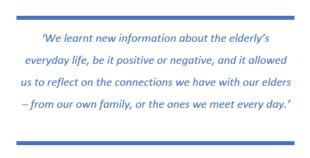 The Masters students are therefore studying a wide range of innovative social initiatives; some of them are a clean break from existing solutions, while others are based on existing solutions with the aim of improving them significantly. These new solutions,
The Masters students are therefore studying a wide range of innovative social initiatives; some of them are a clean break from existing solutions, while others are based on existing solutions with the aim of improving them significantly. These new solutions, 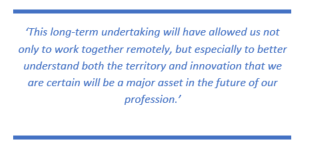 which take into account the needs that older people have expressed in conversation, will be brought forward to the French partners during the “CREATE workshops”, which are all about ideating local innovations.
which take into account the needs that older people have expressed in conversation, will be brought forward to the French partners during the “CREATE workshops”, which are all about ideating local innovations.